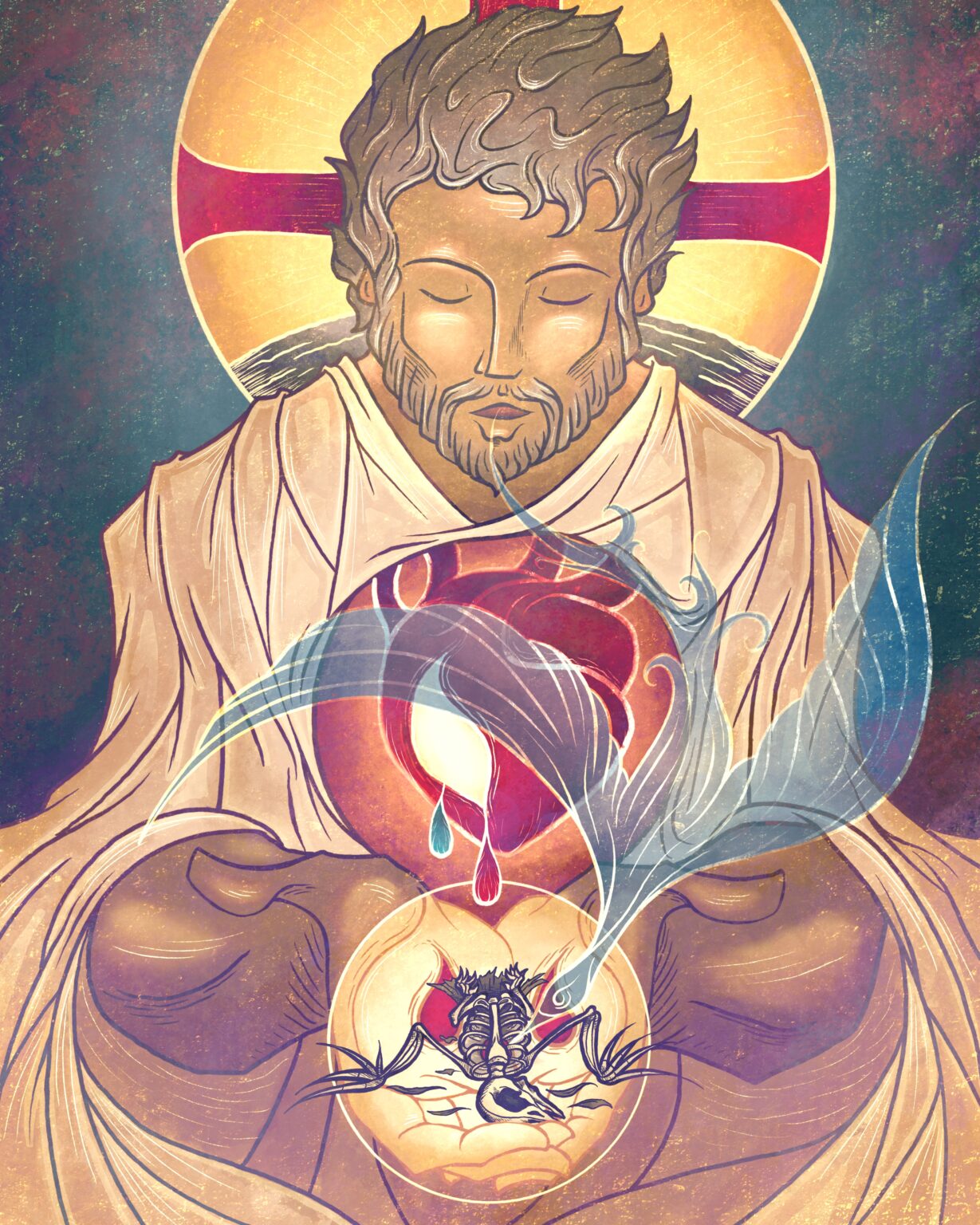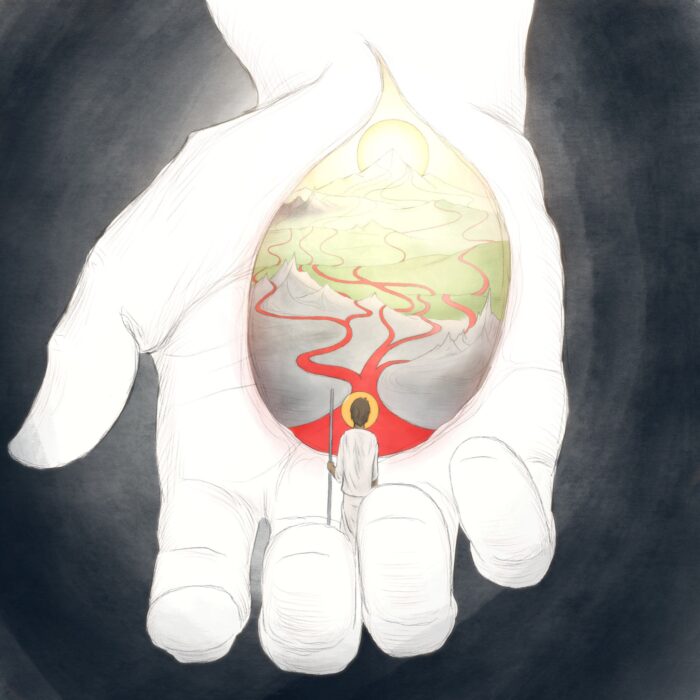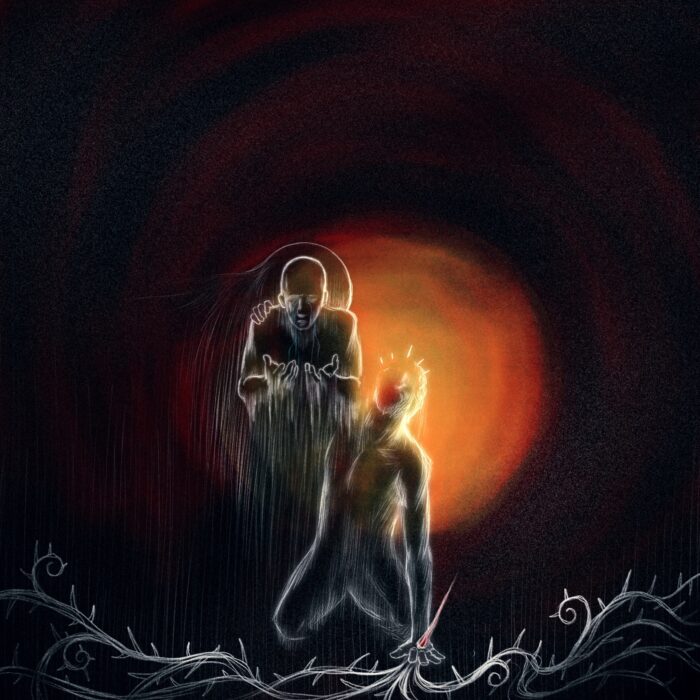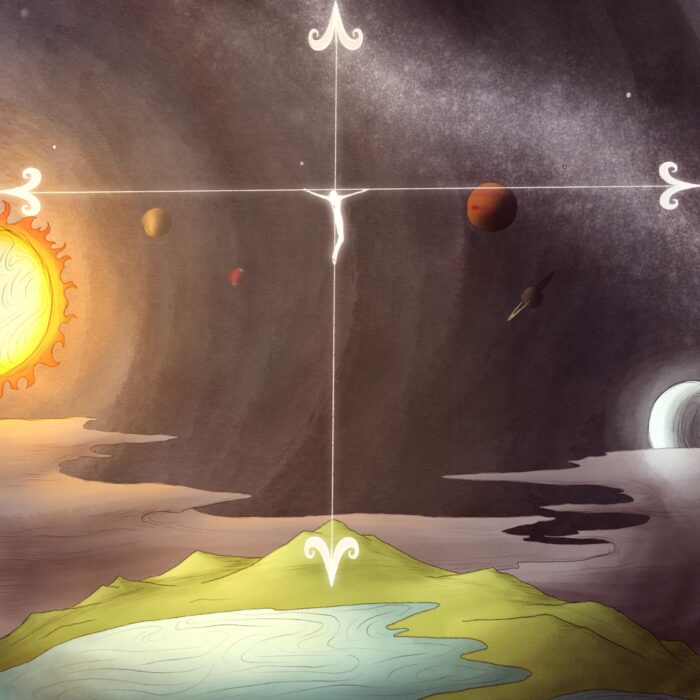Psalm 51:10-12, ‘Create in me a clean heart, O God, and renew a right spirit within me. Cast me not away from your presence, and take not your Holy Spirit from me. Restore to me the joy of your salvation and uphold me with a willing spirit.’
This picture was a request from one of my Patreon supporters.
The Passage Considered
Between verses 7 and 12, David appeals to the Lord twelve times, asking in each instance—in one way or another—to be healed from the ravages of his own sin. Though today’s picture is based on v.10-12 (and the final six appeals), I took the entirety of this section into account. Two things, at least, become clear upon consideration of the whole. 1) That David is acutely conscious of the division his rebellion has created between himself and the Lord and 2) he is desperate to see this relationship restored.
But what can he do? What rivers of sacrificial blood can he spill? What kingdoms of treasure can he offer? None of these things will restore him (v.16); instead, he can only cast himself wholly and humbly—shattered by his sin, helpless in himself—upon the mercy of His covenant Lord….His only hope to survive the sword in YHWH’s right hand is to hide within the refuge of YHWH’s opened heart (v.17)…
And he will be upheld…He will be made clean…He will be restored—Why? How? Because the very hand that holds over David the sword of divine judgment will open itself to receive that judgment in his place (Zeph.3:15); because the heart of David’s covenant Lord will be pierced by the penalty he deserves and pour from its depths the cleansing blood and purifying waters that will wash the fallen king’s sin-stained soul white as snow (Zech. 13:1); because—from the cross—the Holy One of Israel will breathe His Spirit out upon His church across all of time and space, declaring with the exhalation of His very life that He will never take His Spirit from His beloved ones (Jn.19:30)….And finally, because the God thus slain in love is forever risen from the dead, He Himself the living guarantee that any who turn to Him as they lie in the grave of their guilt will—with and in Him—be raised up to unending joy.
The Picture Described
The skeletal bird pictures David’s sin-slain soul. The choice to picture him as a bird derives from the prayer in v.7 to be ‘purged with hyssop.’ This phraseology likely derives from purification rituals described in Leviticus 14 which involved sacrificing a bird, using hyssop to sprinkle its blood mingled with water, and setting a live bird free. Without going into the details (I encourage you to read the section yourself and compare the image if you’re interested), suffice to say that this ritual anticipates Christ’s death and resurrection, picturing our uncleanness—and Jesus’ death—as the dead bird and His purity—and resurrection—as the living one.
In this image, then, David’s soul is dead in its sin and yet upheld by the slain-and-living Lord. The willingness (Ps. 51:12) of the Lord to thus uphold David is pictured in the love-made wounds in His hands. From his riven heart drop the purifying blood and water of Zechariah 13:10 (also echoing the blood and water of Lev.14), and from His opened mouth pours the Spirit whom He will never withhold from His own. Note too that the Spirit is pictured as a living ‘bird’ (dove), again alluding to the ritual of Lev.14.
The Lord’s halo is inscribed with a cross since it is by His death that He upholds, heals, and restores the sinner who falls upon His mercy…and yet, this halo also witnesses to the resurrection (see the tomb stone at its base) since it is the indivisibly Crucified-and-Risen Lord, the “Anastasiform” Christ who alone descends to and rises up from the grave of His people’s sin…
Finally, all of this is pictured within the halo that represents the Divine Glory radiating from the face of Christ since it is only and precisely in His identity as the One who pours Himself out in death for sinners and rises up from that death in joy that Jesus is the Revealer and Radiance of the Beauty of the Unseen Father.




